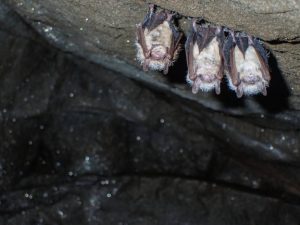Why it’s worth considering a bat house for historic preservation
Bats often conjure thoughts of Halloween and spooky times, but the reality is that these flying mammals are a vital part of Delaware’s biodiversity. While no one really wants bats living in their house, bats can often find their way into attics and dark spaces. Instead of treating them as pests, consider incorporating a more natural approach if bats are finding your historic structure an attractive place to roost.

The First State is home to five species of bats, some of which can eat up to their own weight in mosquitoes every night. Because of their ability to help with pest management — mosquitoes and other insects that cause disease are a main part of their diets — it’s important to protect them and offer alternative housing options, like the bat box installed several years ago at the John Dickinson Plantation.
It was important to install the bat box – which was completed as a Boy Scout project — to protect exterior elements of the building after bats had started roosting behind some shutters. Bat boxes can provide a more appropriate habitat for these flying mammals, while also encouraging them to stick around and help manage those pesky mosquitoes.
To learn more about how to manage bats, especially on buildings or by installing bat boxes, visit the Department of Natural Resources and Environmental Control’s website on bat conservation at dnrec.alpha.delaware.gov/fish-wildlife/conservation/bats.


